Armament


The shell of a 17 pounder
The main armament of the Sherman Firefly was the
Ordnance Quick Firing 17 pounder. Designed as the successor to the British
QF 6-pounder, the 17 pounder was the most powerful British tank gun of the war, and one of the most powerful of any nationality, being able to penetrate more armour than the
Tiger I's
8.8 cm KwK 36, the
Panther tank's
7.5 cm KwK 42, or the
M26 Pershing's
90 mm gun.
Firefly v Panther
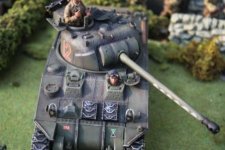
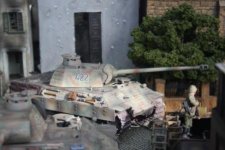
The Firefly 17 pounder was able to penetrate some 140 mm of armour at 500 metres and 131 mm at 1,000 m using standard
APCBC (Armour Piercing, Capped, Ballistic Capped) ammunition at a 30 degree angle.
When supplied,
APDS (Armour Piercing, Discarding Sabot) ammunition it could penetrate some 209 mm of armour at 500 m and 192 mm at 1,000 m at a 30 degree angle,which on paper was able to counter almost every German tank at any likely range
[4][5].
However, early production APDS rounds lacked accuracy and being a sub-calibre shot, the actual penetrating shot was around 50 mm wide being less destructive after it had penetrated enemy tank armour than the 76.2 mm APCBC shell. In any case, APDS ammunition was rare until late 1944.
Despite the Firefly's superior antitank capabilities, the tank was regarded as inferior to the regular Sherman against soft targets such as enemy infantry, buildings and lightly-armoured vehicles. As the war in Europe neared its close, the Allies found themselves encountering these more often than heavy German tanks. Allied tank units therefore typically refused to completely switch to Fireflies.
A good HE shell only became available in late 1944 and even then was not as potent as the standard Sherman 75mm HE shell.
[1] Another problem was that the powerful blast from the 17 pounder gun kicked up large amounts of dirt as well as smoke, making it difficult for the gunner to observe the fall of the shell and thus relying on the commander to observe the fall of the round and to order corrections. Dirt and dust revealed the position of the tank, so Sherman Fireflies would have to move every few shots to avoid detection.
The recoil and muzzle blast could be severely jarring to Firefly crews and the muzzle blast frequently caused night blindness as well. It should be noted that this was a common problem on any tank armed with a high velocity gun, including Panther and Tiger tanks.
The cramped nature of the turret meant that loading the large 17 pounder shell was difficult so Fireflies had a reduced rate of fire compared to regular M4 Shermans.
[3]
Since the Firefly was a stopgap to get a 17 pounder gun mounted on a tank, these problems were never eliminated as the Firefly was to be retired with the introduction of the new British tank designs.
The Firefly's secondary armament was the standard .30 inch coaxial machine gun in the turret. The hull mounted machine gun had been removed to increase ammunition storage for the main gun. A top-mounted .50 cal machine gun was also attached, though many crews removed it due to awkward mounting and position near the commander which limited a full 360 degree view when unbuttoned in battle.
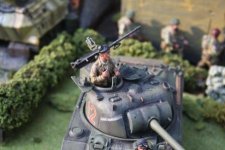
In 1945, some British Shermans were fitted with a rail on either side of the turret for two 60 lb (27 kg) headed rockets. These were used at the Rhine Crossing by tanks of the 1st Coldstream Guards. The tanks were called "Sherman Tulips". The tanks fitted were conventional Shermans and Fireflies. The rockets were inaccurate when fired from a tank as they were being fired from a stationary point and had little slipstream over the fins. Despite this, the RP-3 was valued by tank crews for the destructive effect of its 60 pound warhead.
[2]
Production and distribution
Three different variants of Sherman Firefly served during the Second World War, each based on different variants of the M4 Sherman. The Firefly conversion was carried out on Sherman I (M4), Sherman I Hybrid (M4 Composite) and Sherman V (M4A4) tanks. Some sources state that several Sherman IIs (M4A1) were converted and used in action, but photos allegedly showing these conversions are in fact views of the front half of Sherman I Hybrid Fireflies.[
citation needed]
To complicate matters, a very small number of Canadian licence-built Sherman IIs (M4A1), the
Grizzly, were converted to Fireflies in Canada and used for training, but none saw action.
The majority of Shermans converted were the Sherman V/M4A4 model, of which the British received about 7,200. The Sherman VC and IC variants are easily distinguished by their lower hulls; the VC having a riveted lower hull with a curved shape while the IC has a welded and angled lower hull. The Hybrid can be distinguished by its upper hull which is cast and which gives it a distinctive curved look in comparison to the more boxy hull of a typical Sherman.


A Sherman Firefly crosses 'Euston Bridge' over the Orne as it moves up to the start line for Operation 'Goodwood', 18 July 1944.
Production of the Firefly started in early 1944, and by May 31, some 342 Sherman Fireflies had been delivered to
Montgomery's 21st Army Group for the D-Day landings.
[3]
As a result, British tank troops were composed of three regular Shermans and one Firefly. The same distribution occurred in Cromwell units, but this caused logistical problems, as each Cromwell troop now needed to be supplied with parts for two different tanks, and the Fireflies were slowly replaced by Challenger tanks as they came out.
Churchill units received no Fireflies, and as a result often had to rely on any attached
M10 or
M10 Achilles units to provide increased firepower to deal with tanks their 75mm guns could not eliminate.
[1]
From D-Day in June to the end of the Battle of Normandy in late August, some 550 Sherman Fireflies were built, more than sufficient to replace any permanent tank losses during the battle.
[3]
In late 1944, with the creation of an effective High Explosive shell for the 17 pounder gun, British units started to receive two Fireflies per troop.
[1] By February 1945, some 2,000 Sherman Fireflies had been built and British armour troops were equipped with a 50/50 mix of 75mm and 17 pounder armed Shermans.
In the spring of 1945, production of the Firefly was scaled down, with the last tank being delivered in May 1945. This was the result of several factors, from home-grown designs like the
Comet and
Centurion coming into service which would replace the Firefly, to the impending defeat of Nazi Germany, and the inferior design of Japan's tanks, which it seemed would be the next opponents the British would have to face after the fall of Germany.
[3]
Overall production of the Sherman Firefly reached some 2,100 - 2,200 tanks; exact numbers are hard to determine as documents give contradictory totals.
[3] Jane's World War II Tanks and Fighting Vehicles gives a production of 1783 over 1944 and 563 over 1945, for a total of 2348.
[6]

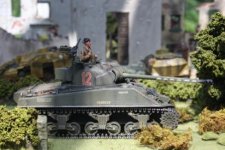


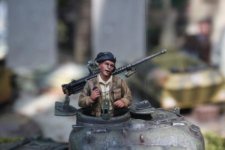
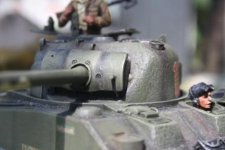









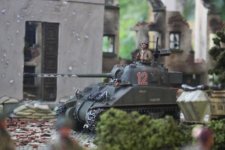

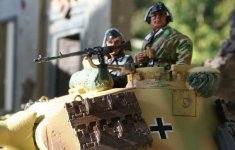
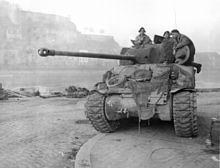

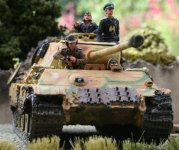


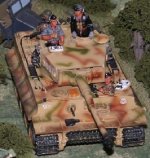
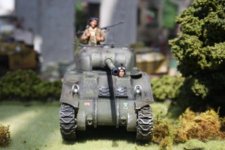
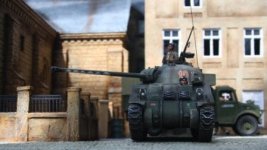
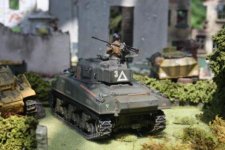
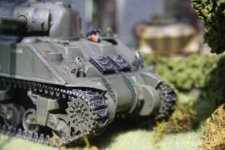
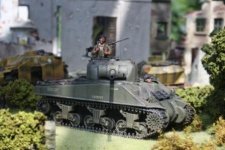
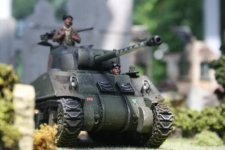








 Wikimedia Commons has media related to: Sherman Firefly
Wikimedia Commons has media related to: Sherman Firefly 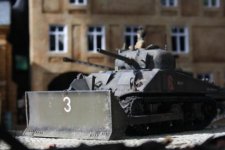
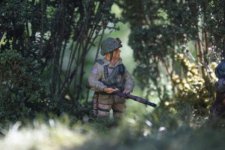
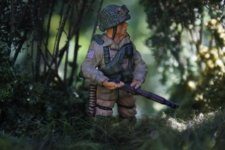
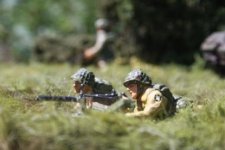

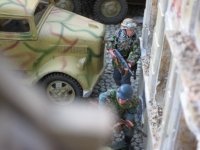

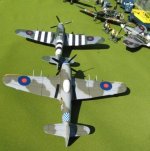
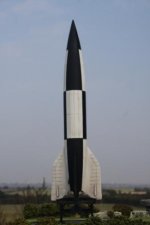
I wasn't expecting that.....

